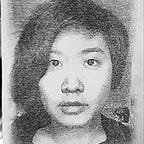What I Care About When I Care About Tea
Of all the places I’ve ever done gongfu tea, my very favorite is my uncle’s living room. A true tea connoisseur, he took a personal interest in educating me and my American partner about tea during our last visit to my hometown of Fuzhou.
Each night, he wordlessly invited us to his tea table with its own built-in plumbing system and brewed cup after cup while waxing poetic about the best kinds of water to use, the anatomy of the tea plant, the history of tea in our province, and anecdotes about where he got all this tea. I’ve always enjoyed spending time with my extended family, even though I’ve only seen them a handful of times since moving to the US with my parents at the age of 7, but language barriers and inertia usually prevent us from having lengthy conversations as adults. These talks over tea may be mostly about brewing times, but they’re a kind of interaction with my family that I never expected to be capable of.
The “gongfu” in gongfu tea is the same word that’s more familiar to Americans as “kung fu” — it connotes deliberate effort, honed and practiced over time. Gongfu tea is technically a type of tea ceremony from Fujian, but it’s also an approach to tea that prioritizes the best tasting experience over efficiency, price, speed, and portability. In other words, gongfu tea is craft tea, just as artisanally-roasted, hand-ground, fair-trade, drip-brewed coffee is craft coffee. In contemporary China and its diasporic settlements, gongfu tea is mostly on the decline: it’s literally called “old people tea” (老人茶) in Taiwan, one of its last cultural strongholds. My interest in it, considering my long history of embracing every moral panic and rejecting anachronistic traditions, came as a surprise even to myself.
As someone with a hyphenated identity, I first came to appreciate gongfu tea for its code-switching abilities: it can be a personal ritual or a social lubricant, functional or recreational, highly formalized or completely relaxed. I’ve found tea sets in an executive board room, in the lobby of a public swimming pool, at a humble farmhouse serving lunch at the top of a mountain, during a wedding ceremony, at tiny cubicles selling strings of LEDs in electronics markets, and in countless homes. Unlike its Japanese counterpart, gongfu is a tea ceremony that integrates seamlessly into your life rather than demanding a sabbatical away from it.
And it’s a worthwhile integration. Pouring tea for yourself gongfu style is the most satisfying kind of ritual. There’s cleansing, and repetition, and precision, and waiting. There’s time to appreciate the feel of your teaware in your hands, and time to experience the flavors and smells of the tea unfold from brew to brew. Its complexities are modular and extensible, fitting neatly into whatever time and equipment has been set aside for it, yet there are endless systems to memorize and collect if your interest is piqued: the interplay between the ceramics and teas, the right places and time to pick and process tea, and even the exact choreography of the pouring ceremony.
But for me, the most important thing about being a disciple of gongfu tea is the way it asks me to connect with strangers at a relaxed pace. The average retail experience in China is harrowing in its intensity: all crushing swarms, pushy salespeople, and suffocating storefronts. A good tea shop provides a luxurious oasis of quiet without veering into the subservient power dynamics of venues for the ultra-rich. The staff will pour you tea for hours and, though it’s expected you’ll make a purchase, never directly ask you to spend a dime. Instead, they’ll talk: at first about proper brewing techniques and the particulars of the strain of tea they’re pouring, then eventually about themselves. These conversations occasionally draw in everyone around the shop. At a family-owned shop in Mount Wuyi, the owner offered us a mountain berry I’d never heard of before, picked that morning from her trip to the tea fields. In eastern Taiwan, I sipped tea alongside boisterous village drunkards who ended their night every night at the tasting room of the tea farm, pounding back tea to ease out of drinking.
Back in New York, it’s hard to find time to brew tea gongfu-style more than once or twice a week, but it finds other ways to pull at me. I fall down online rabbitholes chasing gorgeously-designed teaware, think about tea’s role in European imperialism, plot out hypothetical trips to the gorgeous places my favorite varietals are grown, and take my friends to teahouses until they get sucked in too. It’s a patient obsession, one that waits with the confidence of knowing that it is already an inextricable part of everything I do.
Christina Xu is an organizational designer, ethnographer, and enabler based in New York.
